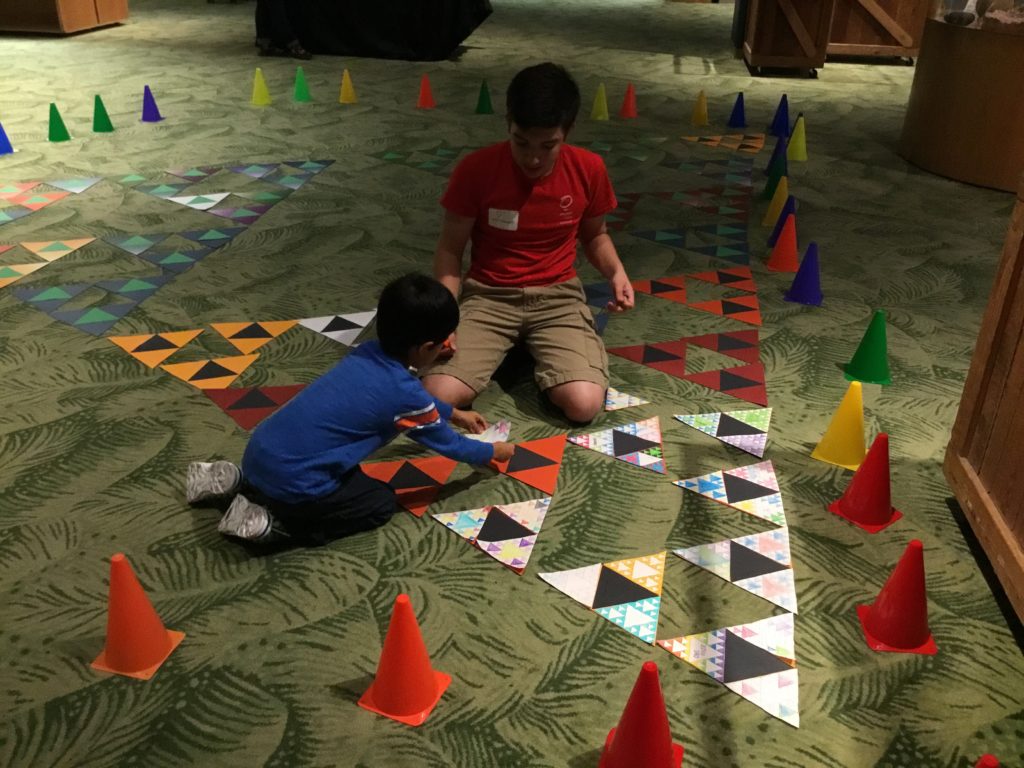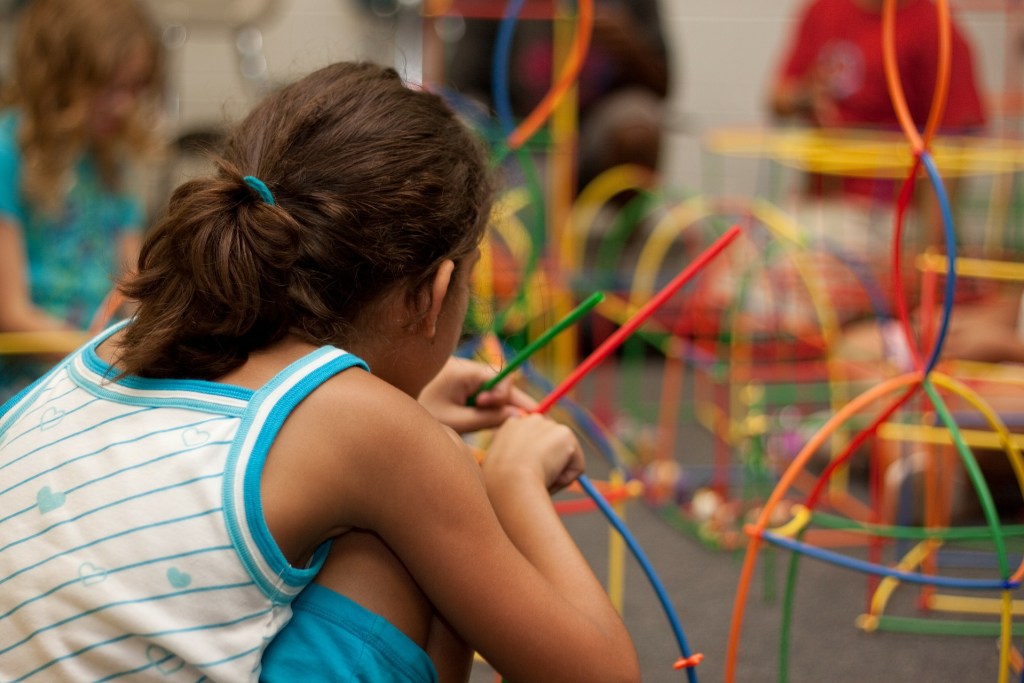A Math Circle is more than just another extracurricular activity or club. I see the Orlando Math Circle as the doorway to opportunity for the children involved in it: an instrument for building an equitable pipeline into mathematics and STEM that provides everyone with access.
It’s a pipeline into success; for as Francis Su, former president of the MAA, stated, “Mathematics is for human flourishing”. It’s that all important ingredient which makes the wheels of life turn smoothly.
How can math circles reach their full potential? Begin at the beginning. As soon as children enter the school system, we have to spark genuine interest and create playful, deep learning opportunities. This means offering programs that teach mathematical play to kindergarten and elementary school students. We have to educate the teachers to engage with the students in mathematical play and art.
We can’t give boxes of geometric manipulative to preschool teachers and expect to get results; instead, we should be training teachers to talk and play mathematically with their students. In middle school we should continue this program by identifying children who show interest in being leaders and teachers. We have to lead by example, offering support, training and encouragement.
With help and grooming, it is these students who will become the volunteers in high school who will go out and aid teaching math circles. This deep learning will be a gradual and natural process that will produce quality teachers to feed the mathematics pipeline.
Many organizations and companies are choosing to fund programs that will help high school students be college ready for STEM, or that enable college students to graduate in a STEM field. There is very little funding for middle school age student programs like this and almost no funding for preschool and elementary age school kids. So the younger kids who are getting exposure to this type of math are children of STEM professionals who understand the importance of early exposure and training and have financial ability to buy this kind of programming for their children.
Or children in states like Massachusetts, who live nearby prestigious colleges that sponsor programs geared at children just starting out their mathematical journeys. These opportunities are making a difference: so much so that, as reported by the Orlando Sentinel, a new bill is requiring the Floridian Department of Education to study the teaching methods of these high performing states.
But it’s not in the textbooks: it’s in programs that inspire creative mathematical thinking and puzzle solving.

If we do not provide funding sources and opportunities for younger children we will not bridge the gap of entry into STEM by underrepresented minorities. When we come into high schools and say we want to help you be successful in mathematics and stem for college readiness, success, we will be forced to backtrack.
Doesn’t it make sense to start mathematics services in the very beginning to help growth instead of offering services for catch up? Why are there so few funding opportunities for pre-k and K math circles? There is a reason why most math circles target middle and high school students; that is where the funding is at.
At the Orlando Math Circle, we are doing our part to change this barren landscape of mathematical fun activities. We are reaching out to our local community and businesses. I believe together we can build this pipeline for success in mathematics: a doorway of opportunity for all!

